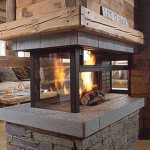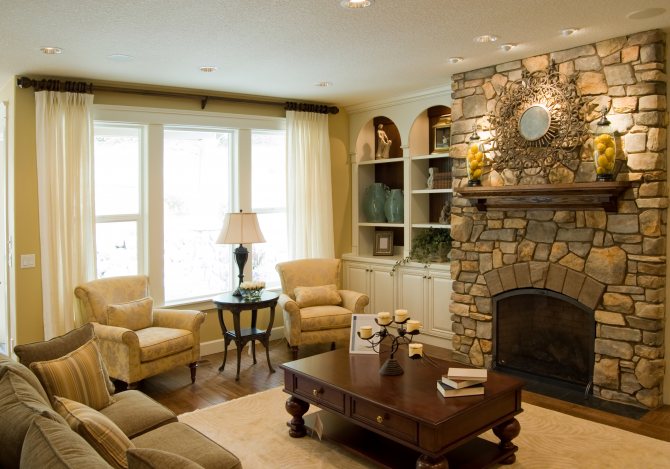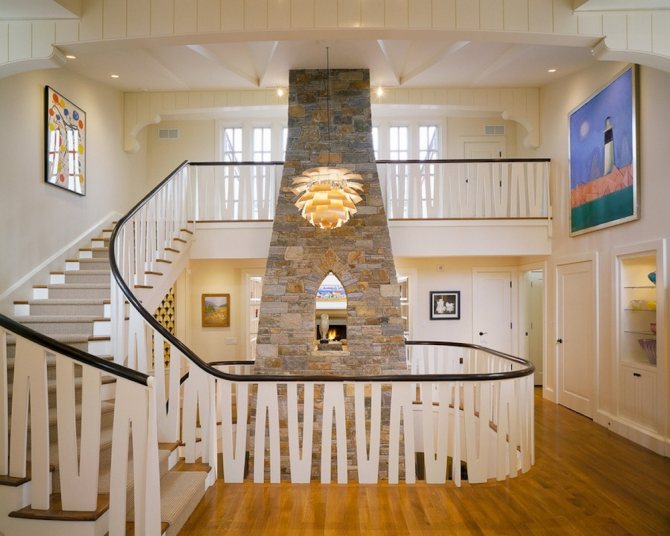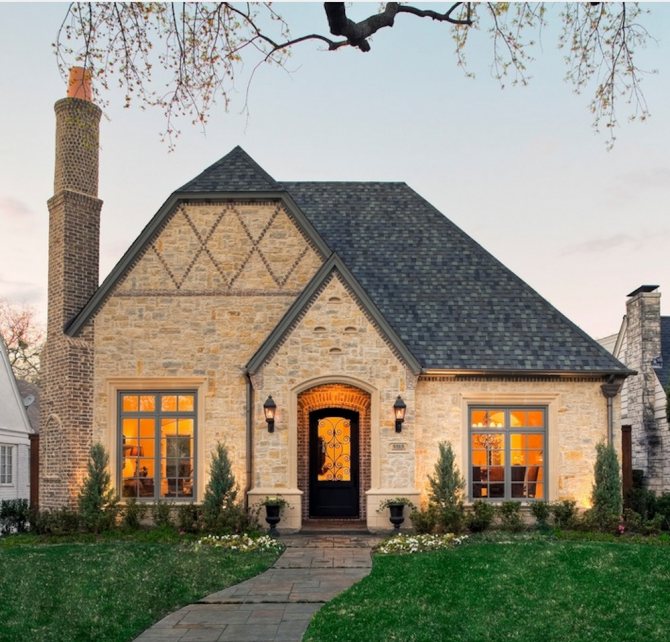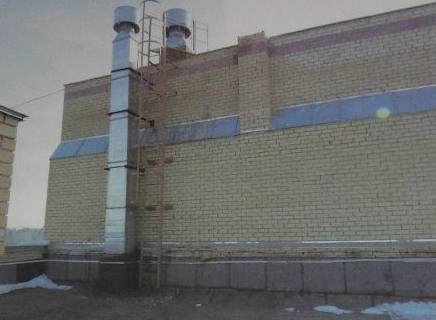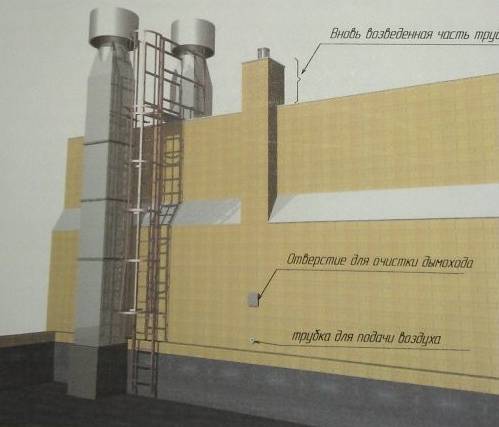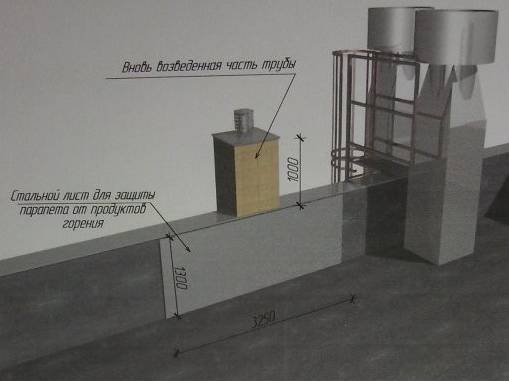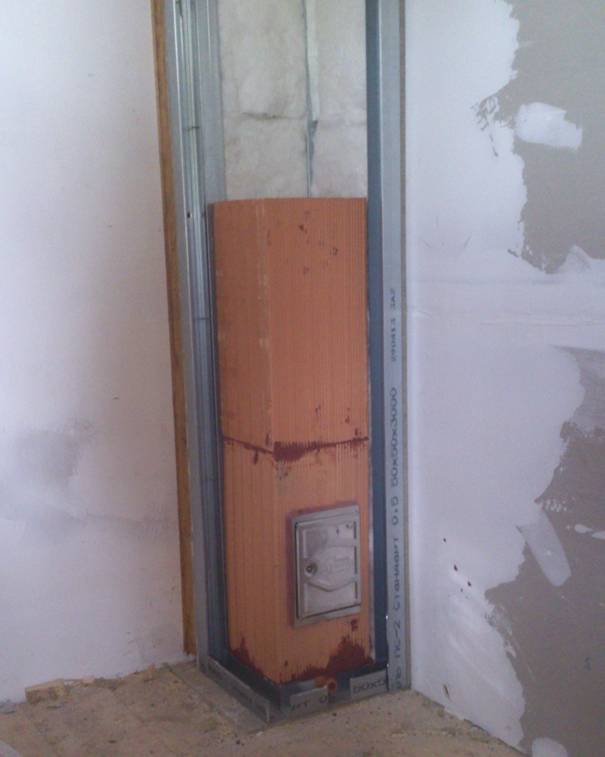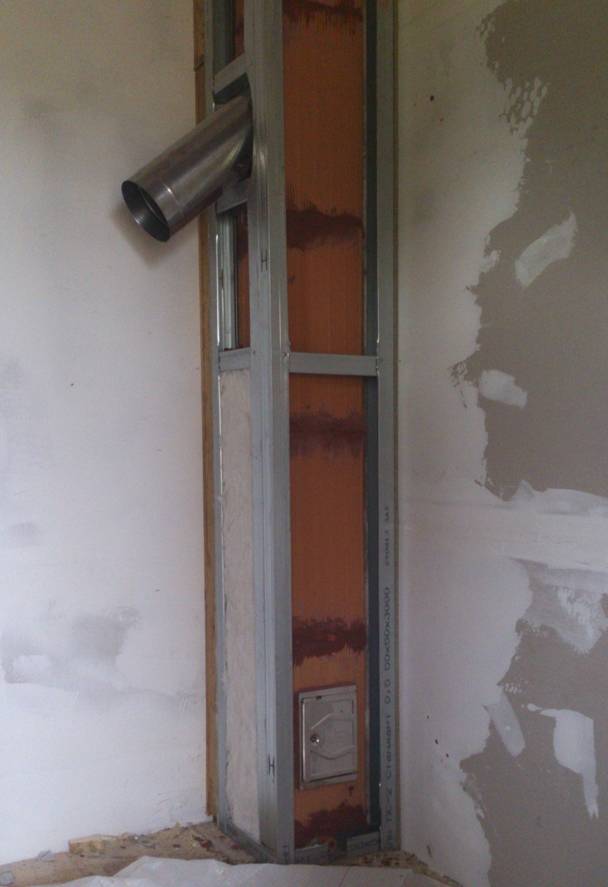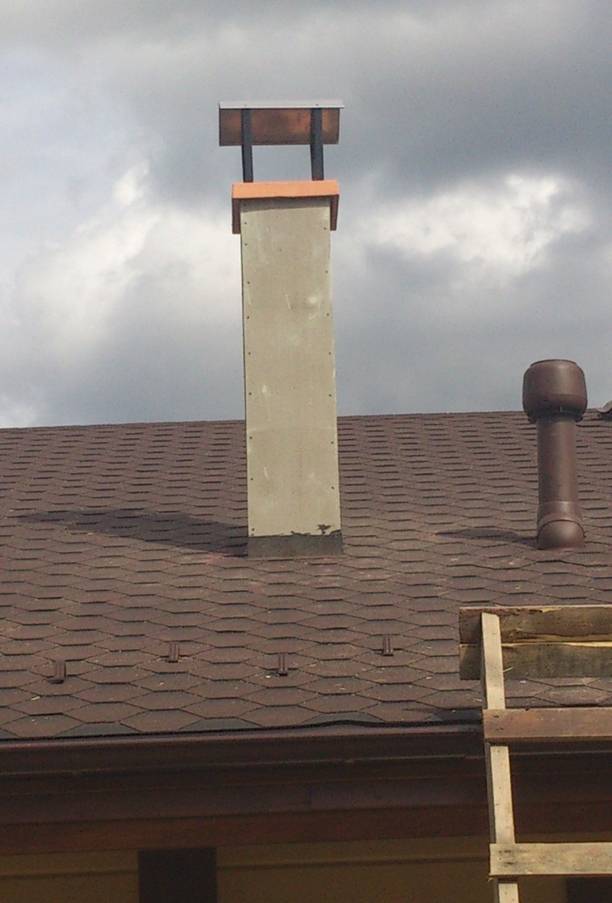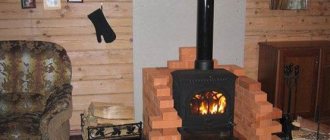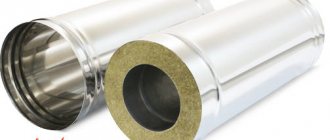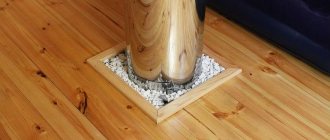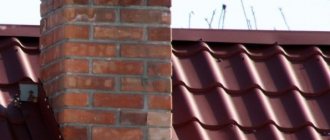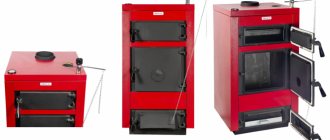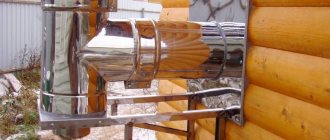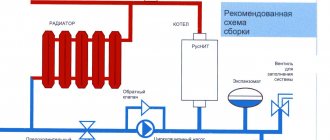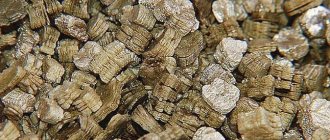Fireplace design
When we build brick fireplaces, the first step is to create a project that displays all the required dimensions of the structure and its parameters:
- Drawing creation. At this stage, a place for installing a fireplace is usually selected and its dimensions are calculated. When these parameters are known, fireplaces with a detailed description must be depicted on paper, observing the scale and affixing all dimensions. Of course, the drawing should also take into account the competent conduct of the chimney through all the ceilings, as well as the location of the blower and the design of the firebox.
- Preparation of tools and materials. Serious variability of materials is possible only when they are selected for cladding. So, finishing can be done using red ceramic bricks or decorative tiles. In this example, the first option will be considered.
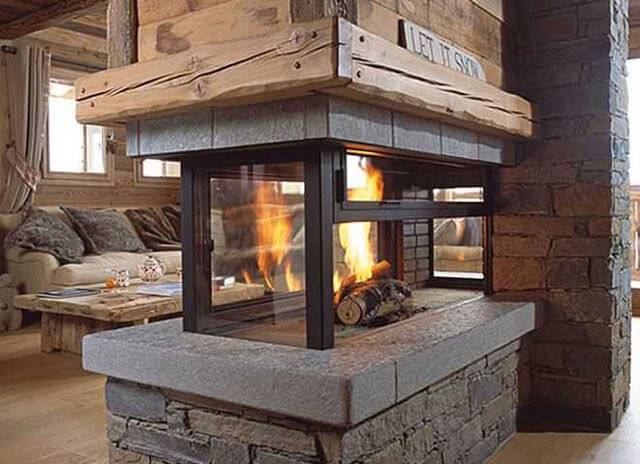
A set of materials for laying a fireplace with the specified parameters is as follows:
- Fireclay bricks of the brand not lower than M200 for the formation of the firebox
- Red ceramic bricks in the amount of 250 pieces (it is advisable to take with a margin of about 10%);
- Materials for pouring foundations and brickwork (cement, sifted sand, gravel and water);
- Waterproofing material for laying the foundation;
- Smooth formwork boards;
- Grate;
- Metal door;
- Damper;
- Blown;
- Metal wire and rods required for reinforcing the structure;
- Wire 0.8 mm thick for dressings;
- Asbestos cord.
Before you make a fireplace in the house with your own hands, you need to prepare the following set of tools:
- Master OK;
- Roulette and marker;
- An even rule;
- Bulgarian;
- Level, plumb line and square;
- Construction stapler;
- Bayonet and shovel;
- Construction mixer or drill with an appropriate attachment;
- Rubber hammer for leveling brickwork;
- Conventional formwork hammer.
Using floor tiles
Ceramic tiles have a number of qualities that are necessary to ensure the fire safety of a fireplace, especially in a wooden house or brick building with wooden floors. It is known that laying tiles requires skill and experience, so consider your options before proceeding. But if it was decided to independently finish the floor in front of the fireplace, then some surface preparation should be carried out.
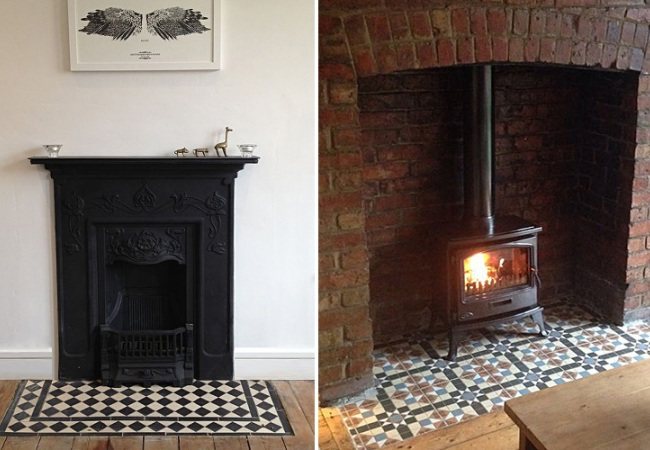

Application of ceramics on the floor
- In order to avoid differences in the horizontal plane, an analysis of the plank surface should be carried out. The detected irregularities should be processed with a plane.
- The laid tiles in front of the fireplace must have a perfect base, otherwise chipping may occur in places with irregularities. As such a base, you need to mount a plasterboard or plywood substrate. The backing sheets are cut along the prepared contour and fixed to the floor with self-tapping screws.
- At the next stage, the formed surface is treated with a primer. It is enough to apply it in one layer with a brush. The primer will promote better adhesion of the tiles and protect the substrate from delamination. You can continue working only when the soil is completely dry. According to preliminary measurements, it is possible to set aside about a day for this.
- With a spatula, a special tile adhesive is applied to the prepared surface.If a brick wood-burning fireplace is installed in the house, then the tiles should not only protect the floor from accidental ingress of hot particles from the firebox, but also prevent the harmful effects of high temperatures on the wood. This means that tiles are best laid with a heat-resistant adhesive. Its layer should be uniform. Despite the apparent pliability of the consistency, it will be impossible to level the tiles in the case of uneven application.
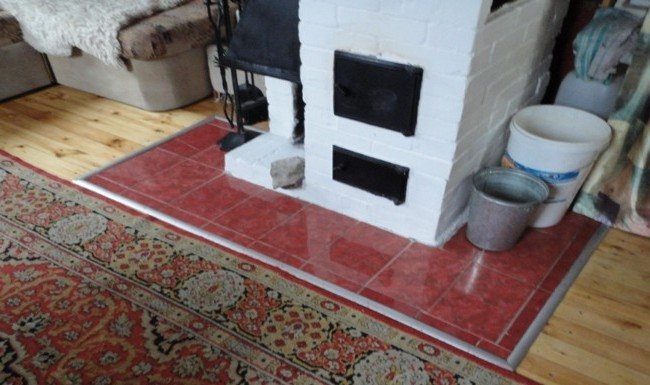

Red tiles in the living room
The complexity of the work lies in the fact that the tiles laid under the fireplace on the floor reveal all the inaccuracies of the masonry, so you should constantly check not only the horizontal level, but also the width of the joints, which, in the absence of experience, is recommended to be increased somewhat.
Good to know: How to make a fireplace from a stove, a couple of simple ways
Gas fireplace
Gas fireplaces are based on a conventional gas burner. The effect of live fire is achieved with the help of artificial firewood, which is made of environmentally friendly non-combustible material that imitates real firewood. These fireplaces are convenient where there is gas. Most models can even be connected to bottled gas.
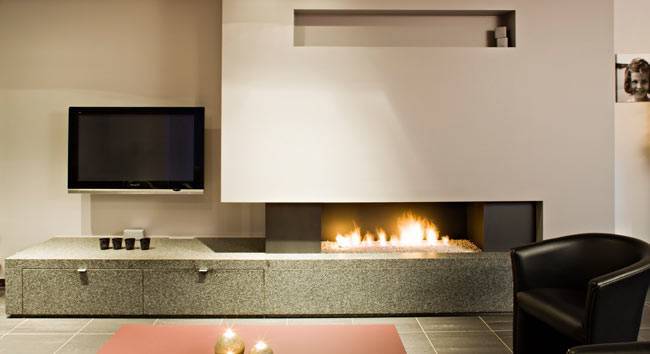

Such fireplaces do not require a special chimney installation: it is enough to bring the chimney into the flue or directly to the street. However, all work can only be carried out with the permission of the gas industry organizations. If everything is done correctly, then heating rooms with a gas fireplace is convenient and safe.
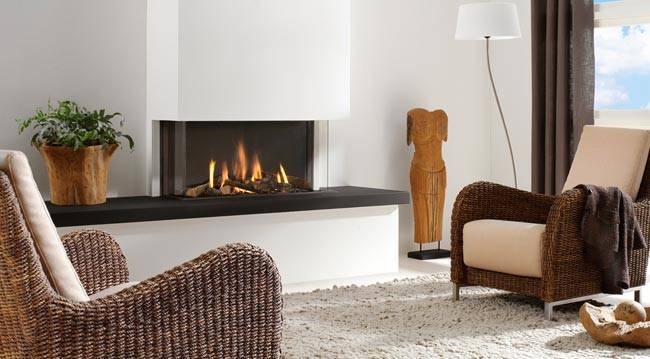

Do-it-yourself fireplace rules
Before assembling a fireplace correctly, so that it is as reliable and durable as possible, you need to take into account a number of rules aimed at achieving these goals:
- When arranging a brick fireplace, you need to create a separate foundation for it;
- The working part of the firebox can only be made of fireclay bricks, which should not come into contact with ordinary bricks;
- When installing the door and ash pan, you need to lay an asbestos cord and leave a small gap required for thermal expansion of metal elements;
- The inner part of the firebox does not require plastering;
- The rear wall of the firebox should preferably be placed at a slight angle.
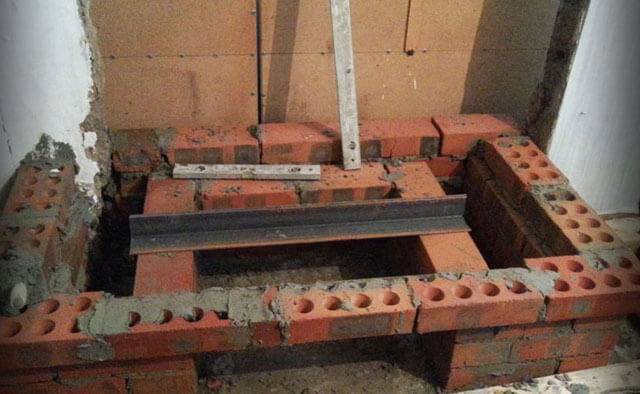

A separate item is the fire safety rules, the observance of which reduces the risk of a fire to a minimum:
- Along the entire length of the flue duct, special cuts should be installed to increase the degree of fire safety;
- When placing the fireplace in close proximity to the wall, it is imperative to lay a layer of refractory material with a thickness of at least 20-25 mm between them;
- When installing the fireplace on a wooden floor, it is necessary to lay a metal sheet or ceramic coating under the structure so that they protrude beyond the fireplace perimeter by at least 30-35 mm;
- At the point where the pipe passes through the floor or ceiling, a 15-cm layer of heat-insulating heat-resistant material must be mounted;
- Only one own chimney can be used for the fireplace.
The operation of the fireplace is also carried out according to certain rules:
- It is strongly discouraged to heat the fireplace to the maximum temperature;
- For normal operation, the fireplace must be regularly cleaned from soot and ash;
- All flammable objects must be at least 70 cm away from the fireplace;
- Only the type of fuel for which the design was designed can be used in the fireplace.
Bio fireplace eco fireplace
A biofireplace also gives the feeling of communication with a living fire. This is a real fire fireplace without a chimney. It doesn't need to be built into a wall, it doesn't need "serious" wiring, and it doesn't give off smoke when it burns. For the installation of biofireplaces in the apartment, no permits or approvals are required.
Due to the absence of heat and soot, biofireplaces can be of the most original forms and made of unusual materials. And their flame is so safe that some models are built into furniture.Bio fireplaces also humidify the air. In combination with aromatherapy, for which special kits are provided, this gives an excellent result. However, with a relatively low price of the biofireplace itself, its operation is very expensive.
We hope that our tips will help you when choosing your fireplace.
by the way
It is believed that the contemplation of fire clears the mind, streamlines thoughts, fills with spiritual warmth, the desire to warm another person, inspire him with optimism. A person becomes generous and kind, understanding and caring, generous and able to forgive and give warmth and love.
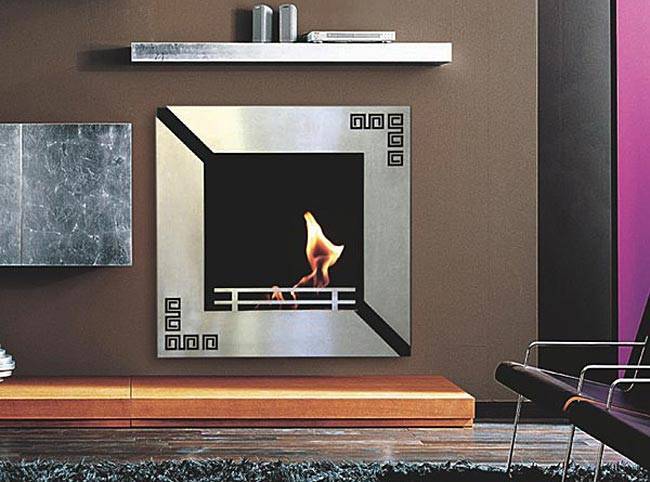

The main components of the fireplace
The portal is an external decorative part of the fireplace that frames the firebox. The area of the portal should be 1/50 of the area of the room, and the height should be no more than two times the depth of the furnace. The mantel is the upper horizontal edge of the portal. Traditionally, a mantel clock or other decorative objects are displayed on it, giving the fireplace a special charm. Smoke cornice - a ledge hanging over the open part of the firebox. Often it is performed in the form of a vault. Fireplace table - a refractory base of the fireplace, which serves to isolate the furnace part from flammable elements of the room. The fireplace insert is a niche lined with refractory bricks. The open part of it is most often square, rectangular or semicircular. The grate is used to maintain fuel and distribute the air entering from below. It is located at the base of the firebox, above the blower channel. The ashpit of the fireplace performs the same function as in a conventional stove. The rear mantel is constructed of fireproof materials and has a thermal insulation function. Khailo - fireplace smoke collector. Smoke tooth (smoke jib) - gas threshold. The smoke tooth protects the room from the ingress of smoke and soot into it; prevents the penetration of cold outside air from the chimney into the firebox. It improves the draft in the fireplace. The chimney (convector) of the fireplace is a kind of hood tapering towards the chimney. The rear wall of the convector is strictly vertical and goes straight into the chimney. A smoke damper, or gate, is a type of stove damper.
Which chimney is better
Chimneys differ not only in size and cross-sectional shape, but also in materials.
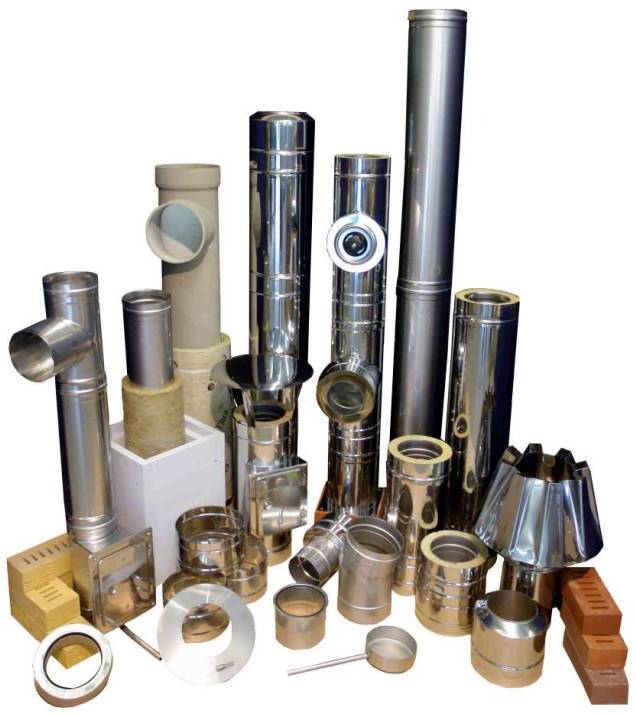

Chimneys for stoves and fireplaces
Brick chimney
Traditionally, a red solid brick is used for the construction of a chimney. It is strictly forbidden to work with cheaper material - silicate bricks - such a chimney will burst at the first firebox. Red brick is strong, fireproof and durable, with high-quality masonry it serves on a par with the building - about 150 years. But the chimney, folded from it, has an inconvenient square shape. As the smoke rises in a spiral, cold air currents develop in the corners of the structure. This leads to condensation and accumulation of soot in the corners, destroying the material.
Brick chimney project in a multi-storey building |
Brick chimney project in a multi-storey building |
Brick chimney project in a multi-storey building |
Another significant drawback is the complexity of installation. It is extremely difficult to build a brick chimney with perfectly flat and smooth walls. The job is time consuming and most costly. The cost of laying a chimney is from 30 rubles. for a brick.
Older houses usually have a brick chimney. Before installing the fireplace, you need to invite the fire inspection, which will determine its condition, whether it needs repairs or not. If you are not satisfied with the location of the chimney, you can lay a new internal one nearby or install an external one, which is attached to the wall of the house. To ensure good draft of the fireplace, the height of the chimney must be at least 4 m.
Steel chimney
A more modern and convenient option is a steel chimney. Due to the circular cross-section, the smoke rises through it evenly, without lingering. Due to the two-layer insulation, condensation does not form on the inner surface of the chimney. Material, lightweight, high temperature resistant, corrosion resistant, durable and simple, mounts on brackets. One person can cope with its installation. In terms of the cost of materials, it is somewhat more expensive than brick, but it wins on installation. Often, in order to improve the operational characteristics of brick chimneys, a steel insert with a round section is placed inside. The role of insulation in this case is played by brick walls. The service life of the steel chimney is 15 years. The cost of a steel chimney is 17,000 (diameter -150 mm, length - 4 m). Installation - 15,000 rubles.
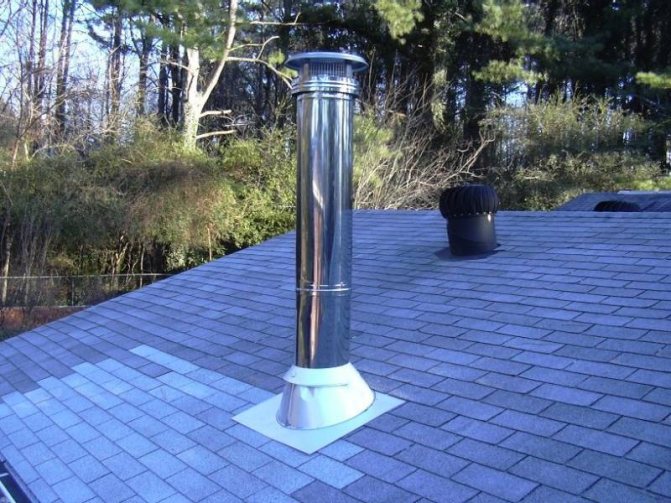

Steel chimney
Ceramic chimney
The best and most reliable type of chimney is ceramic. This is a multi-layer construction. A round ceramic pipe is placed in a separate expanded clay block, between which a layer of basalt insulation is laid. A chimney is assembled from elements held together with glue. The fireclay construction, in contrast to the brick and steel, ordered of any section, is produced in strictly established sizes - from 12 to 20 cm. Manufacturers give a guarantee for the material for at least 30 years. The cost of a ceramic chimney is 24 600 rubles. (diameter -140 mm, length - 5 m). Installation - 15,000 rubles.
Ceramic chimney Effe2 Domus |
Ceramic chimney Effe2 Domus |
Ceramic chimney Effe2 Domus |
How to install a fireplace in a wooden house the correct installation process and video
Many people wonder how to install a fireplace stove in a wooden house. To do this, it is worth considering and correctly performing each of the stages of performing these works.
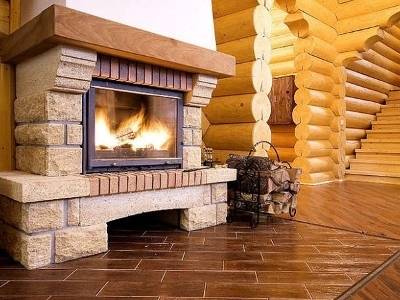

Fireplace in a wooden house
The stages can be conventionally divided into:
- preparatory (planning the location of the fireplace);
- installation of a heat-resistant base for the fireplace;
- installation of a fireplace insert;
- cladding works;
- installation of a chimney system with the implementation of all safety measures.
If you do not know how to properly install a fireplace in a wooden house, follow the step-by-step implementation of all the above works on installing the fireplace and then you will be able to achieve the desired result.
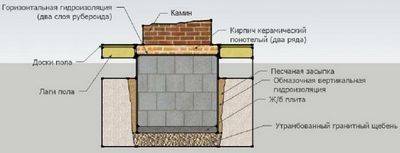

And for those who want to know in more detail how to install a fireplace in a wooden house, a video review of this procedure is posted below.
Note! Performing all these types of work requires compliance with all safety requirements, as well as possession of special knowledge and professional skills. It is best to invite a specialist, but if you still decide to carry out the installation yourself, before installing a fireplace in a wooden house, read the basic recommendations
It is best to invite a specialist, but if you still decide to carry out the installation yourself, before installing a fireplace in a wooden house, read the basic recommendations.
The layout of the fireplace in the room
Be sure to consider the fact that the fireplace should not be placed in line with door or window openings. It is also forbidden to install a fireplace in rooms that are less than 20 m2 in size.
Heat-resistant base and installation of the insert
In order to prepare the room for the installation of the fireplace, it is necessary to remove the floor covering in the place you have chosen for installation and to make a concrete screed there.
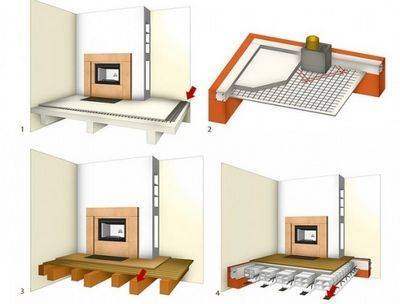

Concrete base scheme
Note! If you took up the construction of a wall fireplace, then the wall itself must be secured by lining it using non-combustible material. The best option for this may be a brick.
If it is not possible to get rid of the floor covering, then the non-combustible base is installed on top of the floor.
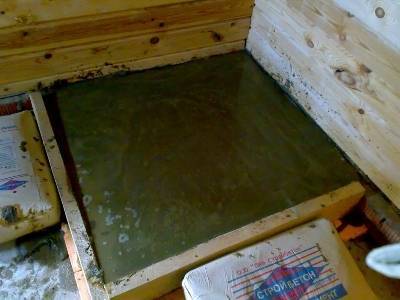

The base surface must be perfectly flat so that the firebox can be installed in a horizontal position. You can use heat-resistant glue or mastic to secure it.
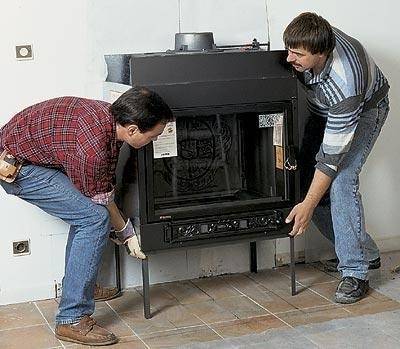

All walls adjacent to the fireplace must be replaced with aerated concrete or brick.
Before installing the firebox, a fireclay brick or a sheet of steel should be laid under it, and it is recommended to place basalt wool between the ceiling and the floor.
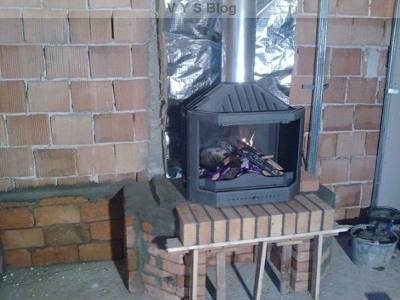

Laying bricks under the firebox
In the installation work for installing the firebox you will need:
- drills for metal;
- drill;
- sealant gun;
- grinder with a disc for metal.
For correct execution, you will need the appropriate skills.
Cladding and installation of the chimney system
Installation of cladding has its own requirements
It is very important that it does not come into contact with the fireplace insert. If you use flammable materials for decoration, be sure to create a kind of protective belt out of reinforced concrete.
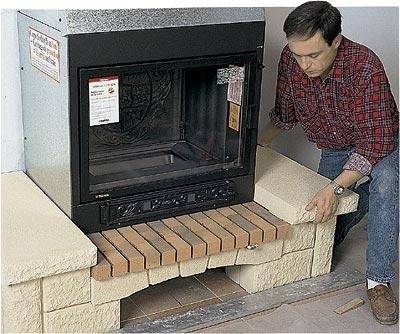

Materials for cladding:
The most common option is to perform plastering. To do this, it is necessary to apply a plaster solution in a double layer to the surface. As a result, the resulting layer should be about five centimeters thick. After it dries, the surface can be painted.
Chimney installation
Heat-resistant mastic is used to fix ceramic tiles. You should monitor the location of the cladding and align it with a block of wood by tapping it on the tiles. The result obtained is kept for a day before the tiles can be washed and cleaned.
The chimney system is made of non-combustible materials. On the inside, you can cover with foil wool. The wooden ceiling must be secured by installing a protective cover over the fireplace. The distance between the casing and the chimney must be at least 30 cm.
Methods to improve the efficiency of a brick fireplace
Competent determination of the dimensions of the firebox and the correct implementation of masonry work allows you to bring the efficiency of fireplaces with an open firebox to 35%. As a rule, this indicator does not rise higher. To double the efficiency of the structure, some signs of the furnace are communicated to it - I mean the installation of a door. In order not to lose the opportunity to enjoy the burning flame, the door is made of heat-resistant glass.
In such cases, a fireplace insert with a door often has a "stove" configuration. As a result of this, a change in the nature of heat transfer is achieved, since the percentage of radiant energy drops by an order of magnitude (with an increase in the degree of heating of massive masonry). These heat accumulations will gradually enter the dwelling for a long time after the extinction of the flame in the firebox of the fireplace stove.
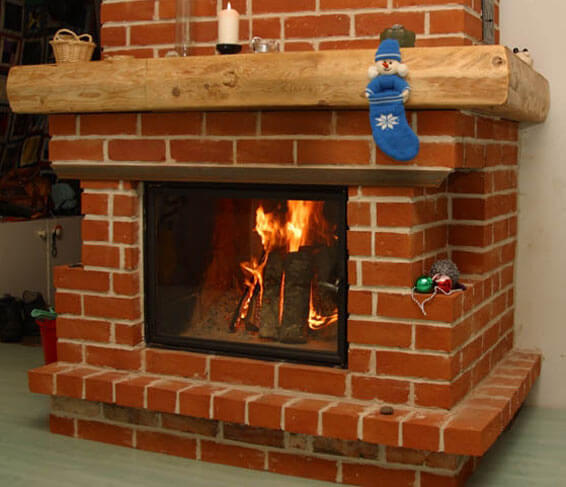

Another option, how to properly install the fireplace stove, is to install a fireplace insert in the brickwork. In order to prevent overheating of the metal structure, its direct contact with the brick is prohibited. In such cases, when installing a stove in a house with your own hands, a small ventilation gap is left in this area. From a functional point of view, this combination can be called a closed firebox in a heat-absorbing brick casing.
We dance from the stove
The arrangement and maintenance of such a hearth is laborious and not cheap, but if you cannot imagine your life without warming yourself in a rocking chair by your fireplace on cold winter (cool summer) evenings with a pipe (book, knitting) or a cup of hot chocolate ( another drink of your choice), covered with your favorite blanket, then this material will be useful to you. First, we decide on the main thing. Fundamentally different conditions when choosing a fireplace and a place for its installation for owners of apartments or a finished cottage and those who are just under construction (in this case, the choice and laying of a fireplace is possible without restrictions in the type of construction).
Ready or future layout, as well as materials for walls and floors - all this assumes different possible options for installing a fireplace
It is important what material the house is built from - wood (rounded logs, profiled beams) or stone (brick, reinforced concrete, aerated concrete blocks). Remember that the fireplace will need a chimney.
All fireplaces are subdivided by location into:
- frontal, located near the walls,
- angular, which are in the very corner of a triangular shape,
- island, or so-called. "Central" (free-standing), which do not touch the walls.
Before designing a fireplace, it is important to understand why you are installing the fireplace: just home decoration or aesthetics plus space heating. Fireplaces for the home, by the way, can perform different functions: heating, decorative, aesthetic and even culinary
Fireplaces are wood, electric and gas and biofireplaces.
You must have clear answers to the questions: type and power of the fireplace; additional elements of the fireplace; the need for a foundation or reinforcement of the floor; increasing the fire resistance of walls in the fireplace area; facing material.
Those who know a lot about fireplaces are advised not to lay them on their own, like chimneys. Such work requires in-depth knowledge of the combustion and smoke removal processes, and the mistake made can be too expensive.
Installing a wood-burning fireplace in an apartment
Installing a fireplace in an apartment is more difficult (and sometimes completely impossible) than in an individual house. The reason is that many apartment buildings were built without taking into account the installation of chimneys.
The only exceptions are three options:
- the last floor of a high-rise building;
- any of the floors of a two-story house (in this case, as in the previous one, it is possible to make an internal chimney yourself);
- high-rise building, which provides for a collective chimney, allowing the installation of a fireplace in each of the apartments.
In all three cases, before starting work, it is necessary to obtain permission to install a fireplace. First, contact the fire department. A specialist of the organization will go to the site to check the condition of the chimney, how it meets the fire safety requirements. The cost of the examination is from 1000 rubles.
Then contact the construction expertise, which will issue a conclusion whether the floors will withstand the weight of the fireplace. The expertise will also develop a project for installing a fireplace (cost - from 6,000 rubles). The prepared project, technical passport and title document must be submitted to the housing and communal services department of the district administration, the non-departmental commission of which will issue permission to install a fireplace.
In an apartment of a multi-storey building, you can install a fireplace weighing up to 700 kg and only with a closed firebox. In this case, the area of the room should be at least 20 square meters in order to ensure proper air exchange.
The installation of a fireplace should be entrusted to a fireplace specialist. They will be able to take into account a lot of specific points.
In particular, during installation, it is important to ensure the flow of air by providing a technological gap in the design of the fireplace. It is necessary to observe the distance between the firebox and the wall so that it does not overheat during operation and does not burst
In case of incorrect installation, the warranty on the firebox does not apply. It must be remembered that any chimney, regardless of material, needs regular maintenance. A specialist must be invited 2 times a year: at the beginning and at the end of the heating season. The soot accumulated on the walls of the chimney impairs draft and eventually destroys the material, since it is an aggressive substance.
Check the chimney
The chimney is a ventilation system. With its help, smoke and other gases that accumulate during its burning will come out of your house. If you feel that there is more burning in the living room, and droplets of water were found on the decorative finish of the fireplace, then it's time to clean the chimney from the accumulated litter.
Fire safety note: always make sure the chimney is open before lighting a fire. This will ensure that the smoke from the flame comes out in the right direction, and your family can enjoy its warmth peacefully.
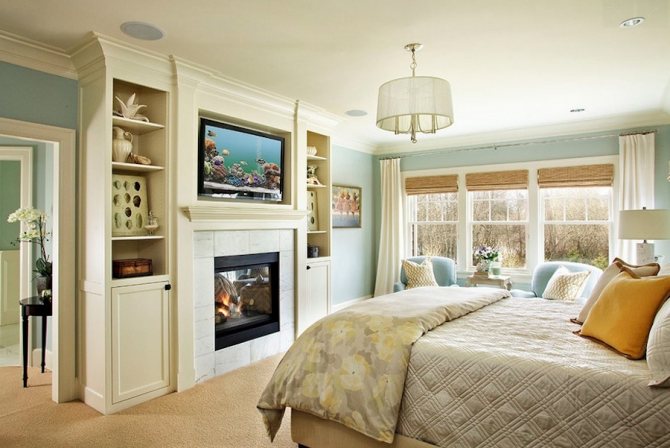

Always open the chimney before starting a fire. Image courtesy of Sandvold Blanda Architecture + Interiors LLC
Where to install the fireplace
Mainly on the ground floor
It would seem that fireplaces should not have weight restrictions. However, it is worth considering where and which model you want to install. The weight of the complete structure (with a chimney, if not built into the wall) sometimes requires reinforcement of floors or foundation. The mass of a small brick fireplace is on average 4.5–5 tons.
As a rule, ceilings are not designed for such a load, therefore large models are installed on their own foundations and only on the first floor. On subsequent floors, light ready-made fireplaces or models built into the walls are used.
You can use fireplaces not only on the first floor of a country house, but then it should be a light gas fireplace for a summer residence.
Pipe to the street
In European homes, the chimney is often located in the outer wall or even outside. The climatic conditions of our country, unfortunately, do not allow repeating this, therefore, you will have to install a chimney in a warm part of the building, otherwise expensive work on thermal insulation will be required.
Perfect room with fireplace
Spacious and tall.
There are restrictions on the area of the fireplace room. It must be at least 20 sq. m with a ceiling height of 3 m. If you install a fireplace in a small room, then the volume of air will not be enough for full combustion. In this case, it is necessary to provide a duct for air intake from the street or from a ventilated basement.
Commensurate with the furnace window.
It is not necessary to place a small fireplace in a large room, because he simply cannot heat the whole room. The area of the firebox for masonry fireplaces should be 1/50 of the area of the room (ratio 1:50), for fireboxes and for factory fireplaces - 1 kW of power per 10 sq. m room.
In a room with direct access to the street, the fireplace will be exclusively an element of decor - you are unlikely to be able to heat the room with it.
Has the correct shape.
It is not recommended to install fireplaces in elongated rooms and corridors, because heating and air flow will be uneven. The fireplace room must have the correct movement of air masses, due to frequent drafts, the draft will be disturbed. When choosing a gas fireplace for a summer residence, take care of good ventilation of the room.
Place for a fireplace
It is important to take into account not only your own desires, but also the recommendations of SNiPs, as well as fire safety rules. For example, the walls near the fireplace should be made of non-combustible materials.
In a wooden house, it is better to install an island model or carry out fire-fighting work.
It is undesirable to place the fireplace in front of the window, as some of the heat will be lost. The firebox should face the center of the room. In any case, it is necessary to contact a specialist who will professionally assess such moments as air movement in rooms and the quality of floors.
There are many "pitfalls" that only masters know about
For example, in a wooden house, it is important to know how the floor beams are laid, the possibility of installing a chimney depends on this. He needs a meter by meter hole
If they are laid with a smaller pitch than required, an expensive renovation will have to be done. published by econet.ru
If you have any questions on this topic, ask the specialists and readers of our project here.
Choosing firewood for the fireplace
Many people wonder what kind of wood is better to heat the fireplace. Preference should be given to hardwood, which must be dry.If you heat the fireplace with wood with a high moisture content, the amount of ash and smoke will increase, and condensation will appear. Dry firewood is easy to distinguish: they are mostly dark in color, have cracks at their ends, and when they burn, they emit a clear sound. The moisture content of recently felled trees exceeds 50%. The wood is able to dry completely in about a year.
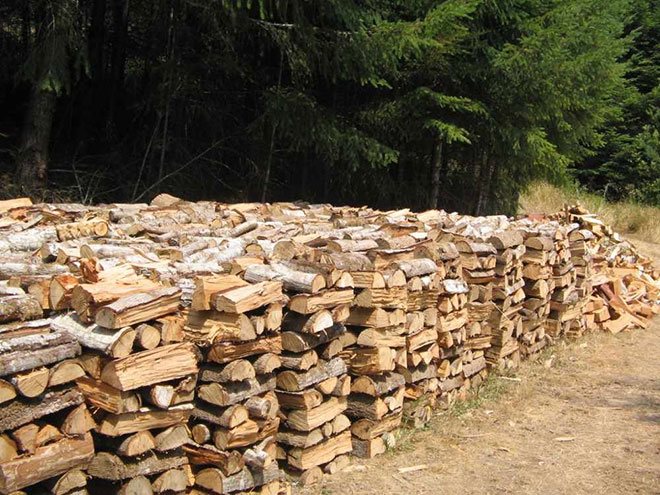

Usually dry wood looks like this.
You can store timber both indoors and outdoors. A woodpile is considered a classic storage option. It is recommended to stack firewood in each next row perpendicular to the previous row. Logs can also be placed in a room with a fireplace. For this, a special niche (firebox) is made in it, into which the raw materials for kindling the device are placed. In this case, firewood is usually located under the firebox. It is necessary to carefully isolate the storage location. If you are not sure that fire safety rules are being followed properly, the wood should be placed away from fire.
It is best to store firewood in a split form. Their optimal thickness should be 6-10 cm, and their length should be 3/4 of the width of the firebox. The average length of firewood, as a rule, is 30-40 cm. The greatest heat transfer is characteristic of hardwood, which burns rather slowly. It includes:
- Birch;
- beech;
- pear;
- oak;
- yew;
- ash.
Medium-hard wood gives off less heat:
- cherry;
- elm;
- cedar;
- fir.
It should be remembered that all of them, except for fir, smoke strongly during combustion.
Softwood gives off relatively little heat, but leaves a lot of soot after combustion, which settles on the inner walls of the fireplace. It includes:
- spruce;
- Pine.
Such wood can be split without much difficulty. If you heat with coniferous wood, you need to remember about the likely appearance of a large number of sparks. They can damage the flooring and cause a fire. At the same time, many users do not really think about whether it is convenient to heat the fireplace with such logs, since they like the pleasant aroma of burning coniferous firewood.
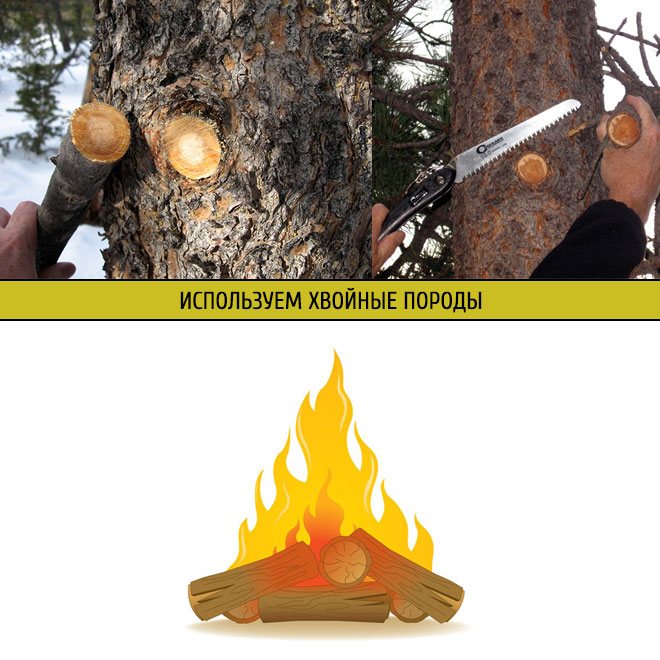

We use coniferous firewood as a firebox
Installing a fireplace in a private house
It is much easier to install a fireplace in a private house, in terms of permits. As such, there are no regulatory documents. The only thing to consider is recommendations for the arrangement and condition of the chimney and the weight of the structure.
The location of the fireplace must be determined at the design stage of the house. Depending on the size of the room in which it will stand, and the purpose (it will be used for heating or carry a decorative role), the size and power of the firebox are selected. The parameters of the chimney depend on these values. As a rule, ready-made closed furnaces are purchased for fireplaces today, on which manufacturers will certainly indicate the recommended size of the chimney section. If the chimney does not match it, the fireplace will smoke during operation.
Materials and tools
The most popular, and at the same time, the easiest to manufacture (if the word "simple" is applicable to stove masonry) are brick fireplaces. It is about the manufacture of such a structure that I will talk about in this section.
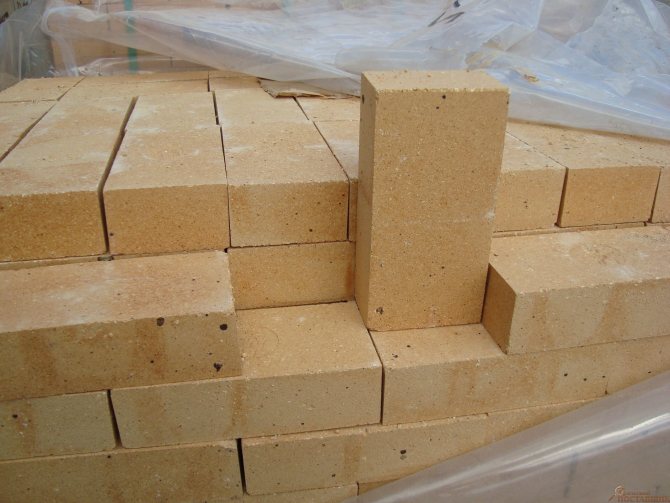

Refractory brick for combustion chamber
From the materials we will need:
- Ceramic bricks (M150 or better) - from 250 to 500 pieces, depending on the dimensions of the product.
- Fireclay fire-resistant bricks for lining - about 50 pieces.
- Metal parts of the fireplace - grate, protective grill, door, etc.
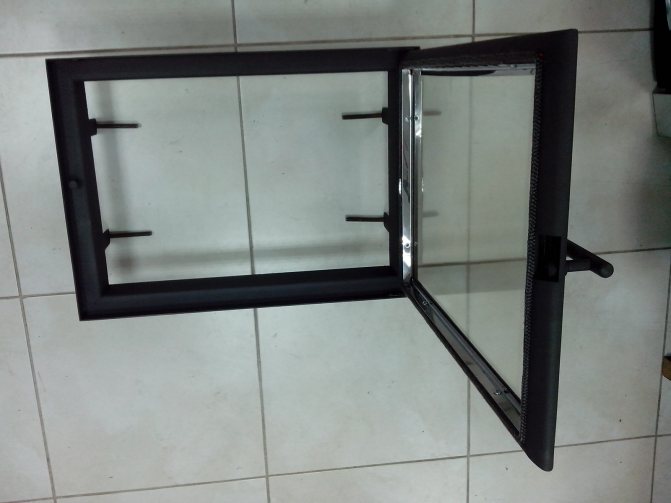

Fireplace door with fire-resistant glass
- Metal corners (50 mm and more).
- Masonry mix for fireplaces and stoves.
- Cement mortar for pouring the foundation.
- Sifted sand, with a grain size of 0.5 to 1.5 mm.
- Plaster mix.
- Cladding material - clinker tiles, natural stone, etc.
- Refractory materials for the manufacture of protective screens.
- Sectional sandwich chimney.
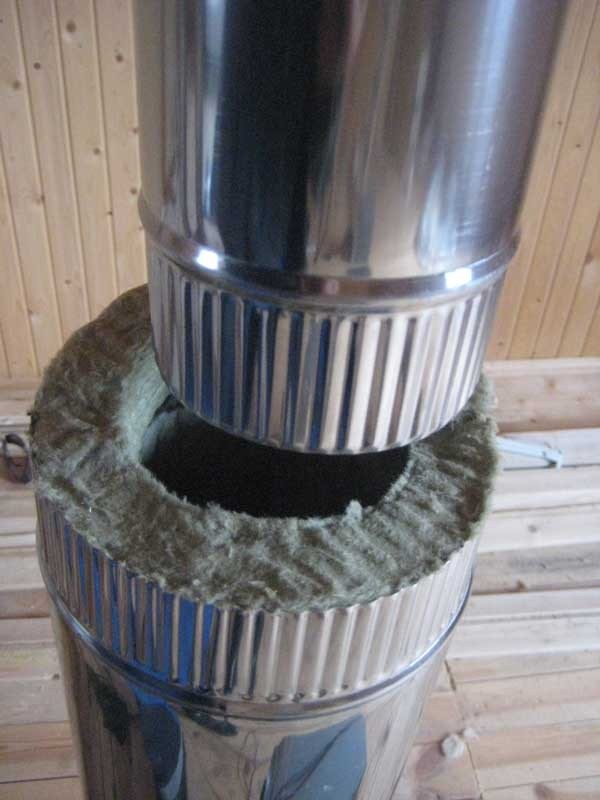

Such a sectional chimney is very easy to install.
For the masonry of the structure and its finishing, we will use the following set of tools:
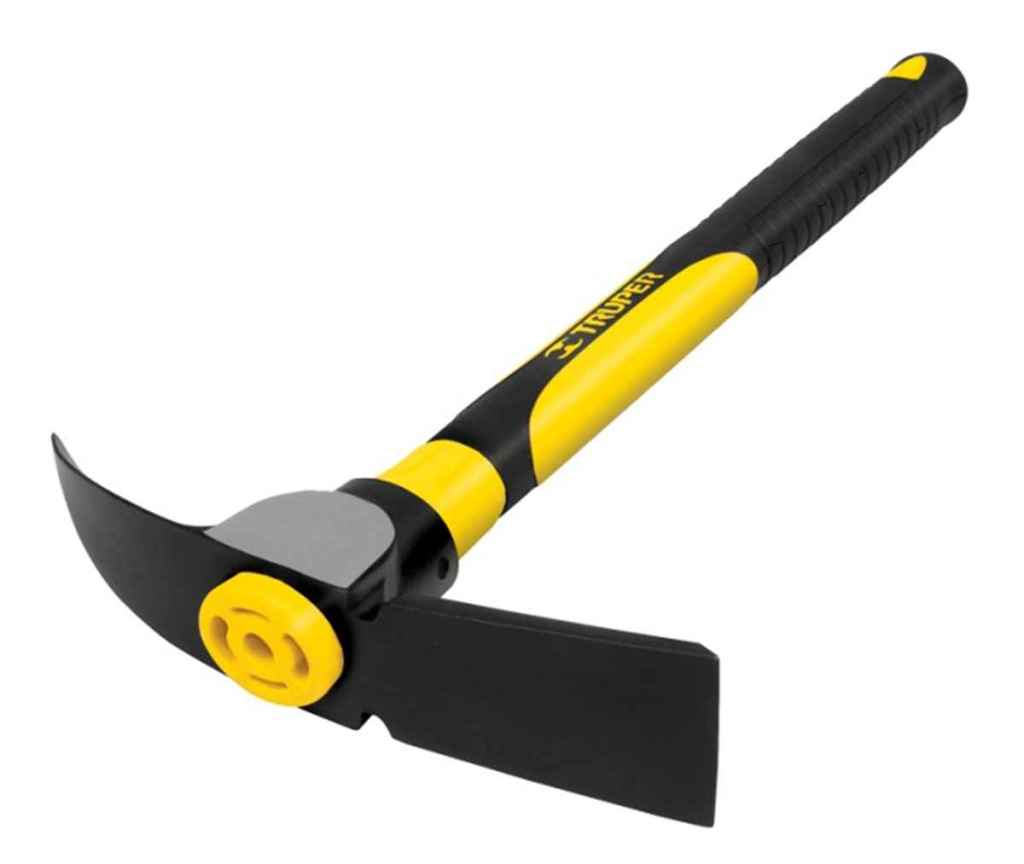

Kiln hammer
- Shovels for digging out a pit and mixing mortar.
- Tanks for solution preparation (for foundations, masonry and plastering).
- Measuring instruments - level, plumb line, tape measure, square.
- Furnace hammer.
- Master OK.
- Spatulas.
- Seam brushes.
- Joining.
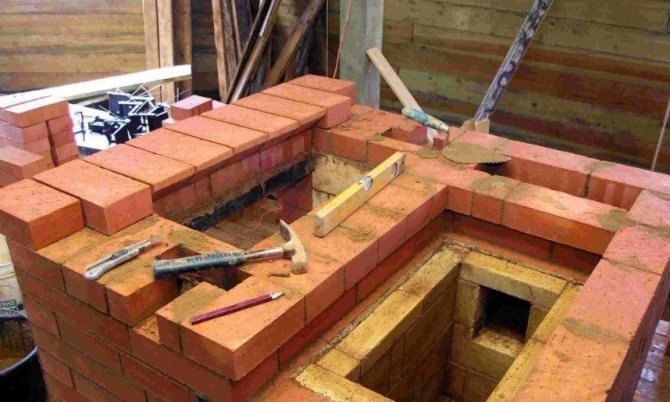

You will also need a level, a trowel and other little things for work.
In general, there is nothing particularly difficult - but it is much more convenient to work when everything you need is at hand.
Preparation of tools and materials
To make a fireplace yourself, you need the following set of tools:
- Master OK;
- Mason's hammer or rubber mallet;
- Notched and normal trowel;
- Mixing buckets;
- Perforator;
- Screwdriver;
- Construction mixer or drill with an appropriate attachment;
- Building level;
- Water level;
- Plumb line;
- Roulette;
- Pencil or marker;
- Bulgarian;
- Tile cutting device.
The list of required materials is as follows:
- Red oven brick, brand M-200;
- Facing brick;
- Steel corners with a section of 50x50 mm;
- Steel strips with dimensions of 50x5 mm;
- Self-tapping screws with wide washers;
- Plastic dowels for self-tapping screws;
- Heat-resistant masonry mixture;
- Heat-resistant mastic;
- Cement grade M500 and sand;
- Heat-insulating foil-clad material in the form of plates;
- Minirite slab (required for arranging a fireplace in a wooden building);
- Ceramic tiles or porcelain stoneware;
- UD and CD profiles for drywall;
- Drywall sheets;
- Set of decorative grilles for ventilation windows;
- Heat resistant sealant.
Chimney installation
The efficiency and safety of a fireplace stove in a wooden house directly depends on the presence of a well-thought-out smoke exhaust system.
Rules for arranging a chimney when installing a stove in a house from a bar:
- A brick chimney in the areas of passage through combustible structures must have walls with a thickness of 250 mm. Direct contact of wood and brick surfaces is prohibited: they must be separated by a layer of thermal insulation material.
- When using steel chimneys, it is better to give preference to double sandwich structures, which include basalt wool and heat-resistant steel. An exception is the initial compartment (at a distance of 250-400 mm from the fireplace): it is advisable to use a single pipe for its manufacture. This will make it possible to protect yourself from excessive heating of the docking unit between the firebox and the chimney. The minimum distance between the double pipe and the wooden surface directly depends on the thickness of the thermal layer in the sandwich.
- When installing a stove in a country house, the arrangement of passages through the ceilings and the roof involves the use of special protective adapters.
- When organizing a passage for a chimney through roofing and interfloor ceilings during the construction of a stove in a wooden house, it is necessary to keep in mind the degree of primary and seasonal shrinkage of wood. For these purposes, it is advisable to use movable aprons to decorate the passage. At the same time, the structural features of the chimney are taken into account, since the apron must be able to move along the pipe during changes in the dimensions of building structures.
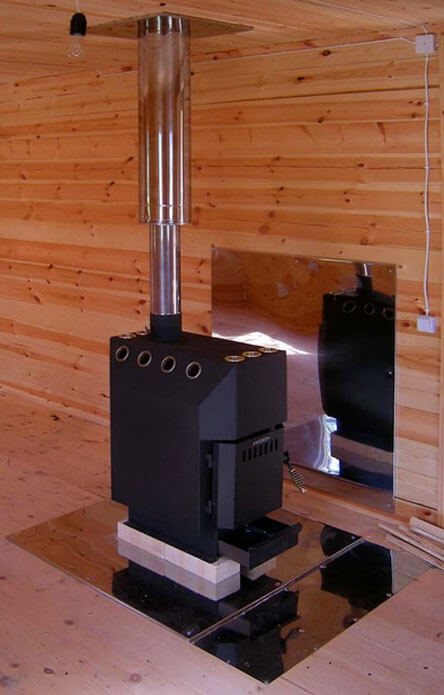

Above it was said only about the main features of installing a stove in a country house. In addition to them, there are a number of secondary factors. Any devices and structures where an open flame is used requires special attention and exact implementation of all fire safety standards. It is advisable that all design and installation work on the installation of fireplaces and stoves is carried out by professionals with the necessary experience and knowledge.
